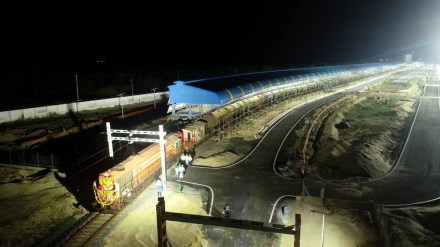The Cabinet approved on Wednesday two railway multi-tracking projects with a total cost of Rs 6,405 crore, in a boost to freight traffic.
The projects, covering seven districts across Jharkhand, Karnataka and Andhra Pradesh, will increase the railway network by about 318 km. These projects will improve travel convenience, reduce logistics cost, alleviate congestion, and increase the service reliability of the national transporter, according to an official statement.
The first project covering 113 km between Koderma and Barkakana passes through a major coal producing area of Jharkhand. It will also serve as the shortest and more efficient rail link between Patna and Ranchi. The second project will cover 185 km between Ballari and Chikjajur. The project line traverses through Ballari and Chitradurga districts of Karnataka and Anantapur district of Andhra Pradesh.
This is the fifth key announcement from the Cabinet Committee on Economic Affairs (CCEA) within a year to enhance the rail network in the country. Prior to this, the CCEA had approved projects to add new rail lines and doubling of existing lines. In May, the CCEA gave the nod to two multi-tracking projects worth Rs 3,399 crore. In April, four railways projects worth Rs 18,658 crore were launched to increase the existing rail network by about 1,247 km. The Union Budget for FY26 kept the total capex estimates for Indian Railways at Rs 2.65 lakh crore, which was similar to FY25 revised estimates.
The multi-tracking works announced on Wednesday will enhance connectivity to around 1,408 villages with a total population of nearly 3 million. These are key routes for the transportation of commodities such coal, iron ore, finished steel, cement, fertilisers, agriculture commodities, and petroleum products.
With the doubling of lines on these routes, it’s estimated that the railways will carry extra freight of about 49 million tonne (MT) annually. In FY25, the Indian Railways’ freight loading stood at 1,617.38 MT, which was 1.68% higher than the previous financial year.
“These multi-tracking proposals are poised to streamline operations and alleviate congestion. The projects are in line with PM’s vision of a new India which will make people of the region “Atmanirbhar” by way of comprehensive development in the area which will enhance their employment and self-employment opportunities,” the official statement said.
The projects are in sync with the PM-Gati Shakti National Master Plan for multi-modal connectivity which was launched in 2021 to bring together 16 ministries, including railways and roadways, for integrated planning and coordinated implementation of infrastructure connectivity projects.
